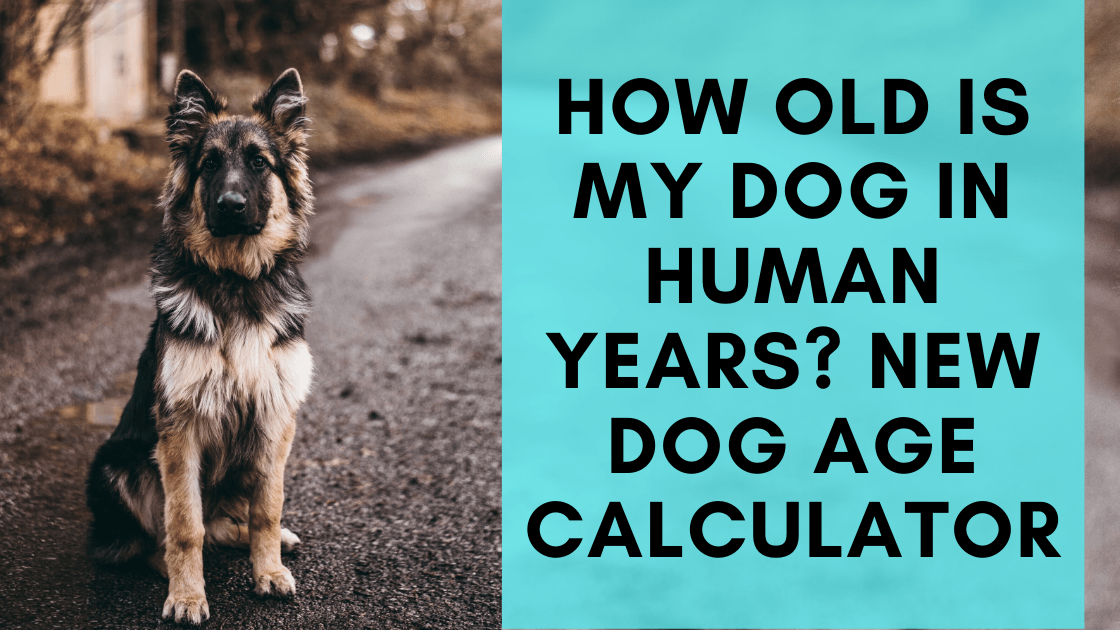All of us dog lovers have the habit of attributing human feelings and characteristics to our canine friends. I know I can’t be the only one who does my dog’s voice on the regular. And in addition to ascribing feelings like jealousy and sadness, so many of us want to know, how old is my dog in human years?
Being able to match our dog’s age to its human equivalent is one more way to make our dogs more human-like and better understand them. Until recently, most of us used the popular, though definitely unscientific, method of multiplying our dog’s age by seven. In other words, a one-year-old dog is the same as a seven-year-old human, a five-year-old dog is a 35-year old human, and a 10-year old dog is roughly 70 in human years.
This rationale likely stemmed from the average dog age expectancy of 10 years and human expectancy of 70 years. The problem? Dog's age at varying rates based on size and breed types, and so do humans for that matter.
Well, my friend, scientists have come up with a new formula that more accurately converts dog years to human years. It utilizes new concepts in aging to better match life milestones of dogs to humans and better predict what their age would be if they were human.
The new ‘dog years to human years’ calculator
In November of 2019, a new study was published by researchers at the University of California San Diego that took a closer look at dog’s ages in human years. Instead of using a generic ration, the researchers utilized a new method of identifying aging known as an epigenetic clock. Basically, it allows researchers to observe chemical modifications in a person’s DNA over time.
According to Science Mag, the epigenetic clock allows researchers to observe modifications to specific DNA sequences which give a glimpse at biological age, and specifically the toll that things like disease, poor lifestyle and genetics take on our bodies.
Researchers have quickly confirmed that humans aren’t the only species with predictable epigenetic clocks. They set out to determine how the epigenetic clocks of dogs differ from humans, which lead to the new dog years to human years’ calculator.
What did the researchers discover?
In the study, genetic researchers looked specifically at the epigenetic clocks of 104 labrador retrievers. It was important to use the same, pure-bred dog, because of consistencies in life expectancy, average size, and genetic similarities. Once they began looking at the DNA patterns of the dogs at various ages, it became clear that they follow a similar trajectory to humans.
Dog ages, and literal DNA mutations, matched up best to human ages in the youngest dogs (4-weeks) and oldest dogs (16 years). Meaning, dogs that are very young, are exactly like very young humans, and dogs that are very old for their breeds are exactly like very old humans. While this isn’t exactly earth-shattering to anyone that’s spent time around a dog, it’s important because it was proven at the cellular level.
How old is my dog in human years? The new formula
Knowing how these dogs' epigenetic clocks matched up to the epigenetic clocks of humans over the course of their lifespan allowed researchers to create a formula that would adjust your dog’s age to human years. Because the oldest dog in the study was 16 years, the formula involves taking the natural logarithm of the dog’s real age, multiplied by 16 and adding 31 to that total (source).
Or, in mathematical terms: (human_age = 16ln (dog_age) + 31)
But if you’re like me, and aren’t regularly finding the natural logarithm of any numbers, there are a number of calculators out there that will spit out your dog’s age in human years. Just remember, this formula was created based on the life span of a Labrador Retriever. Smaller dogs who live longer and very large dogs who have shorter life expectancies won’t match up as well.
So, when is my dog considered senior or old?
When thinking about your dog in human years, it naturally gets us thinking about when our pet is considered to be old. I have to admit, plugging my own Lab’s age of 4 into the calculator and seeing that he’s 53 in human years put some serious perspective into place!
For large breed dogs, veterinarians usually consider them to be senior between 5-7 years old depending on the life expectancy of the breed. Once your dog reaches this age, it is important to continue with regular veterinary care and to be on the lookout for signs of aging discomforts, illness or complications. How your dog handles aging can depend on genetics and factors like arthritis and cancer.
When it comes to caring for your senior dog it becomes more important than ever to watch out for things like weight gain, dental issues, and arthritis.
How old is my dog in human years? And does it matter?
In short, no. While it’s fun to see where our dog’s ages match up on the human spectrum, it’s certainly not essential to providing the best care or lifestyle. This type of age-related research is very new, but it is definitely incredible that scientists are able to draw similarities at the cellular level.
What’s best is to follow your vet’s guidelines when it comes to age-appropriate care for your dog. Respect your dog’s need for exercise and listen to their cues when they’ve had too much (or need more).
What are you waiting for? Go check out your dog’s age in human years. It certainly is a fun conversation starter for the dog park or with friends.
How old is your dog in human years? Were you surprised by what the calculator told you? Share in the comments below!



